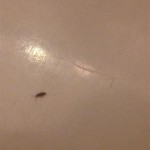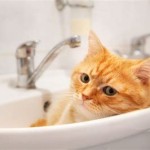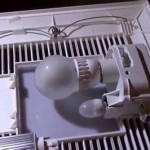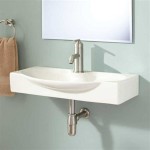Bathroom Sink Does Not Drain
A slow or completely clogged bathroom sink drain is a common plumbing issue. It can range from a minor inconvenience to a major disruption, depending on the severity of the blockage. Understanding the potential causes and solutions can help homeowners address the problem quickly and effectively.
Common Causes of a Clogged Bathroom Sink
Several factors can contribute to a bathroom sink blockage. Identifying the likely culprit helps narrow down the appropriate solution.
- Hair: Hair is often the primary cause of slow or clogged bathroom sink drains. It accumulates over time, trapping soap scum and other debris.
- Soap scum: Soap reacts with minerals in hard water, creating a sticky residue that clings to pipes and contributes to clogs.
- Toothpaste: Thick toothpaste can contribute to clogs, especially when combined with hair and soap scum.
- Mineral buildup: Hard water deposits can accumulate inside pipes, restricting water flow and eventually leading to a complete blockage.
- Foreign objects: Small items like jewelry, toys, or cotton swabs can accidentally fall into the drain and become lodged.
- Plumbing issues: In rare cases, the clog may be caused by a deeper issue within the plumbing system, such as a blocked vent pipe or a problem with the main sewer line.
Initial Troubleshooting Steps
Before resorting to more intensive methods, some simple troubleshooting techniques can often resolve minor clogs.
- Check the stopper: Remove the sink stopper and inspect it for hair and debris. Clean it thoroughly and reinstall it.
- Boiling water: Pouring a pot of boiling water down the drain can sometimes melt soap scum and dislodge minor clogs.
- Baking soda and vinegar: A mixture of baking soda and vinegar can create a fizzing action that helps break down organic matter in the drain. Pour one cup of baking soda down the drain, followed by one cup of vinegar. Let it fizz for 30 minutes, then flush with hot water.
Manual Removal Techniques
If the initial troubleshooting steps are unsuccessful, manual removal methods can be employed.
- P-trap removal: The P-trap is the curved pipe located under the sink. Placing a bucket underneath, carefully loosen the slip nuts connecting the P-trap to the drain pipes. Remove the trap and clean out any debris. Reassemble the trap, ensuring the nuts are tightened securely to prevent leaks.
- Plumbing snake (auger): A plumbing snake is a flexible tool that can be inserted into the drain to break up or retrieve clogs. Feed the snake into the drain opening, rotating it as you push it forward. Once you feel resistance, rotate the snake to break up or snag the clog. Pull the snake back out, cleaning off any debris.
Chemical Drain Cleaners
Chemical drain cleaners are readily available but should be used with caution.
- Types of cleaners: There are various types of chemical drain cleaners, including alkaline and acidic formulations. Choose the appropriate type for the suspected clog.
- Safety precautions: Always wear gloves and eye protection when using chemical drain cleaners. Follow the manufacturer's instructions carefully. These chemicals can be corrosive and can damage pipes if used improperly.
- Environmental impact: Chemical drain cleaners can be harmful to the environment. Consider eco-friendly alternatives whenever possible.
Preventing Future Clogs
Taking preventative measures can significantly reduce the frequency of clogged drains.
- Hair strainer: Install a hair strainer over the drain opening to catch hair and other debris before they enter the pipes.
- Regular cleaning: Periodically flush the drain with boiling water or a baking soda and vinegar solution to prevent buildup.
- Avoid pouring grease down the drain: Grease solidifies in pipes and can contribute to clogs. Dispose of grease in a separate container.
- Watch what goes down the drain: Be mindful of what goes down the drain, avoiding items that could potentially cause blockages.
When to Call a Plumber
While many drain clogs can be resolved using DIY methods, some situations warrant professional assistance.
- Recurring clogs: If clogs occur frequently, there may be a deeper underlying issue within the plumbing system.
- Multiple clogged drains: Simultaneous clogs in multiple fixtures could indicate a problem with the main sewer line.
- Inability to clear the clog: If DIY methods are unsuccessful, it's best to call a plumber to avoid causing further damage.
Understanding Your Plumbing System
Familiarizing oneself with the basic components of a bathroom sink drain system can aid in troubleshooting and prevention.
- Drain stopper: The drain stopper controls the flow of water in and out of the sink.
- P-trap: The P-trap traps debris and prevents sewer gases from entering the home.
- Drain pipes: These pipes carry wastewater away from the sink to the main sewer line.
- Vent pipe: The vent pipe allows air to enter the drain system, which helps water flow smoothly.

How To Fix A Bathroom Sink That Won T Drain Bfp Bay Area

5 Natural Ways To Unclog A Bathroom Sink Hiller How

Why Is My Bathroom Basin Not Draining Living By Homeserve

How To Unclog A Bathroom Sink The Home Depot

Why Is My Sink Not Draining All You Need To Know Checkatrade

How To Unclog A Bathroom Sink The Home Depot

How To Fix A Bathroom Sink Drain Stopper 4 Easy Solutions

How To Unclog A Sink The Right Way

5 Reasons Why My Bathroom Sink Not Draining Ps Plumber Singapore

Plumbing New Vanity Sink Won T Drain Completely Home Improvement Stack Exchange
Related Posts







